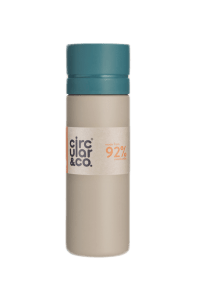Strategies for more sustainable and circular plastics.
The importance of plastics within modern society should not be diminished, however, the potential for increasingly detrimental impacts on the natural environment cannot be denied. Bolstered by the growing unsustainable nature of the plastics value chain, which directly contributes to the generation of negative outcomes such as GHG emissions and growing waste and pollution.
‘There is more single-use plastic waste than ever before – an additional 6 million metric tons (equivalent to almost 1 kg per person on the planet) generated in 2021 compared to 2019 – still almost entirely made from fossil fuels.’ – Minderoo Foundation Plastic Waste Makers Index 2023
The negative impacts of plastic pollution have been widely acknowledged for years. Yet it is only more recently that growing awareness and knowledge surrounding the negative impacts associated with plastic pollution on global challenges such as the changing climate, air pollution, and human health have increased.
As industry moves forward it will become increasingly important to act towards the reduction of such impacts whilst retaining the utility of plastics. And to do so, it will be vital to shift towards a more circular and sustainable plastics system.
What are the key strategies which should be adopted to increase the circularity and sustainability of plastics?
- Smarter use
- Increased circularity
- Renewable materials
When considering solutions for the circularity and sustainability of plastics it is important to acknowledge there is no silver bullet solution, and context consideration is vital.
How can we embed smarter use of plastics?
- To better increase the circularity and sustainability of plastics it is essential to consider the application of plastics critically. Actively ensuring that unnecessary plastics are reduced. Additionally, products that contain plastics should be re-designed to extend their durability and lifespan, to keep them in use for longer. This may be further complemented by practices such as repairing to further extend a product lifespan.
- To encourage smarter use of plastics it is often vital to develop new, innovative business models. For example, those which are conducive to service or reuse models, optimising for maximised use through access rather than ownership.
- The launch of the Circular Returnable Cup, is an example of a plastic product designed for access rather than ownership in order to increase its usage while minimising resource extraction associated with a single-use cup.
- Taking this approach towards the smarter use of plastics also means that businesses futureproof themselves against directives such as the EU Single-Use Plastics (SUP) Directive. This directive aims at addressing unnecessary plastics which are the most common culprits of plastic pollution.
- To reduce the unnecessary purchase of plastics, an emerging trend within society is the sharing of goods, through sharing libraries. Such an approach enables access instead of ownership. The adoption of a changed consumer habit may have a positive environmental impact whilst reducing costs incurred by consumers.
- To better use plastics within the business environment, businesses may share and re-use packaging.
- It is important to recognise that the above examples of smarter applications for plastics have great value and impact when implemented at scale.
How can we increase the circularity of plastics?
- It is possible to achieve increased circularity of plastics by closing the materials loop through utilising strategies such as resource efficiency, to lower material and value losses. Unfortunately, a large majority of recycled materials on the market may be used in low-value products. As a result, most recycled materials are downcycled rather than upcycled, losing value.
- Many plastics contain additives, which often means that the capacity to be effectively recycled is reduced and may be contaminated. As a result, this material is often incinerated due to uncertainty surrounding the material composition, resulting in further GHG emissions.
- Circular business models may be adopted. For example, business models such as take-back services for products minimise the likelihood of disposal. By a company offering a take back service of their own products, such as the one we offer here at Circular&Co. it is possible to further maximise correct recycling and the potential reuse of products, thus minimising downcycling, or worse, disposal.
- Through increased collection, sorting, and recycling, it is possible to reduce the amount of plastic pollution in the environment. Such an approach creates incentives for the construction of infrastructure needed to increase the recycling of plastics.
- As guided by policymakers, the setting of quotas for recycled content in suitable applications such as those in the electronics, automotive, construction, and packaging industries. An example of a directive relevant to increasing the circularity of plastics relates to the EU Packaging and Packaging Waste Directive.
Is adopting renewable materials for plastics the answer?
- One proposed solution for decoupling plastic production from fossil-based feedstocks is through the incorporation of renewable feedstock-based plastics, alternatively referred to as biobased plastics. The term ‘biobased plastics’ refers to plastics that are either wholly or partially made from biological resources which are renewable, reducing the demand for fossil-based materials.
- The adoption of biobased plastics to increase circularity requires the entire life cycle to be examined to ensure that their usage is beneficial to the environment beyond a reduction in fossil resource use. For example, it is crucial to consider the source of the feedstock and its scarcity. Does the production and harvesting result in potential competition with food production, causing indirect or direct land-use change? To mitigate these risks the use of organic waste streams and residues instead of primary sources is favourable.
- It is important to acknowledge that ‘biobased’ does not necessarily correlate to properties such as biodegradability. There is an abundance of differences between biobased, biodegradable, and compostable plastics as is explored in a previous article ‘Biobased, Biodegradable, and Compostable plastics.’ Each application should be considered on a context-specific basis, with an examination of whether the required infrastructure for closing the loop is available.
How can the scale up and adoption of the previous strategies be instigated?
- Businesses individually have the potential to have great impact and influence through the adoption of such strategies across their industries, whether this be through the use of an alternative approach to plastics or through the utilisation of an innovative circular business model.
- Citizens as consumers have the potential to trigger great impact through changing purchasing and behaviour habits. For example, choosing durable over quick convenience or choosing to reuse rather than buy new.
Sources:
- https://www.eionet.europa.eu/etcs/etc-ce/products/etc-ce-products/etc-ce-report-2023-1-pathways-to-circular-plastics-in-europe-good-examples-from-countries-business-and-citizens
- EC, 2022, Communication from the Commission to the European Parliament, the Council, the European Economic and Social Committee and the Committee of the Regions — EU policy framework on biobased, biodegradable and compostable plastics (COM(2022) 682).
- EEA, 2020, Plastics, the circular economy and Europe′s environment — a priority for action, EEA Report No 18/2020, European Environment Agency (https://www.eea.europa.eu/publications/plastics-the-circular-economy-and)
- EEA, 2021, ‘A framework for enabling circular business models in Europe’ (https://www.eea.europa.eu/publications/a-framework-for-enabling-circular#:~:text=Circular%20business%20models%20can%20enable%20the%20meeting%20of,all%20phases%20of%20the%20life%20cycle%20%28EEA%2C%202019a%29.)
- Ellen MacArthur Foundation, 2023, ‘Plastics: designing out plastic pollution’, Ellen MacArthur Foundation (https://ellenmacarthurfoundation.org/topics/plastics/overview)
- EU Packaging and Packaging Waste Directive https://environment.ec.europa.eu/topics/waste-and-recycling/packaging-waste_en
- EU Single-Use Plastics (SUP) Directive https://environment.ec.europa.eu/topics/plastics/single-use-plastics_en
- https://www.minderoo.org/plastic-waste-makers-index/news/single-use-plastic-production-still-on-the-rise-as-it-threatens-to-push-society-further-from-net-zero-climate-goals/#:~:text=Minderoo%20Foundation’s%20groundbreaking%20Plastic%20Waste,contribute%20to%20the%20climate%20crisis.
- European Commission, Directorate-General for Environment, Biobased plastic : sustainable sourcing and content : final report, Publications Office of the European Union, 2022, https://data.europa.eu/doi/10.2779/668096

